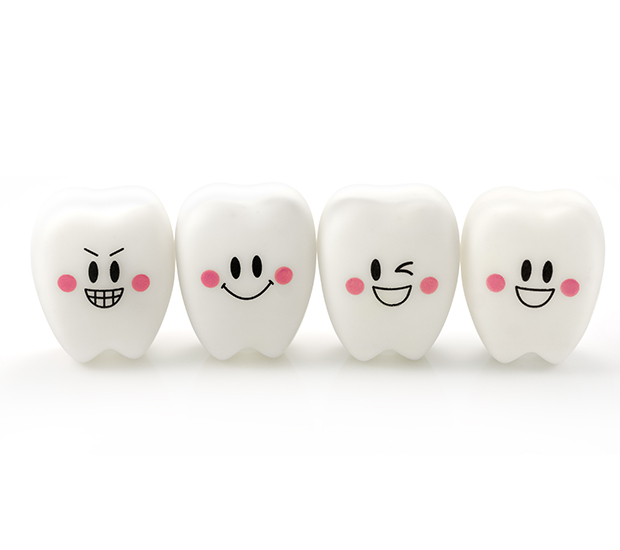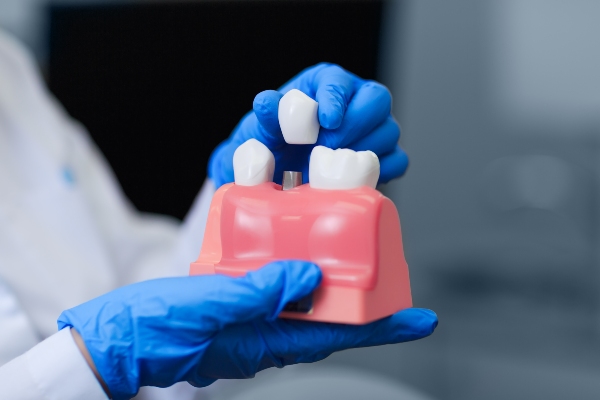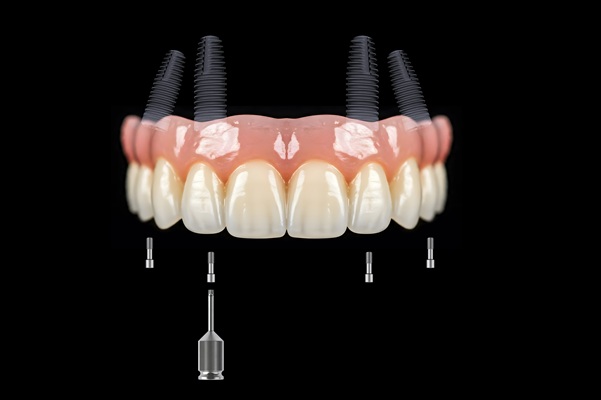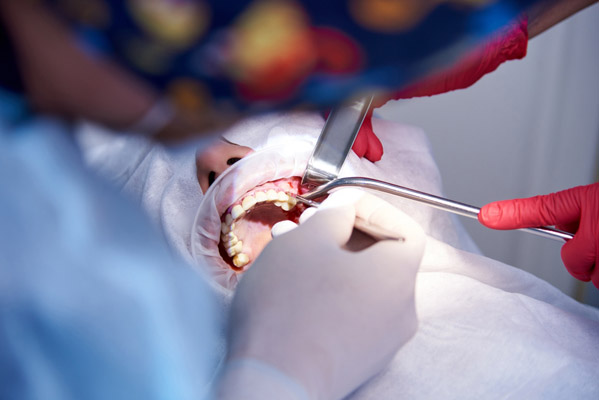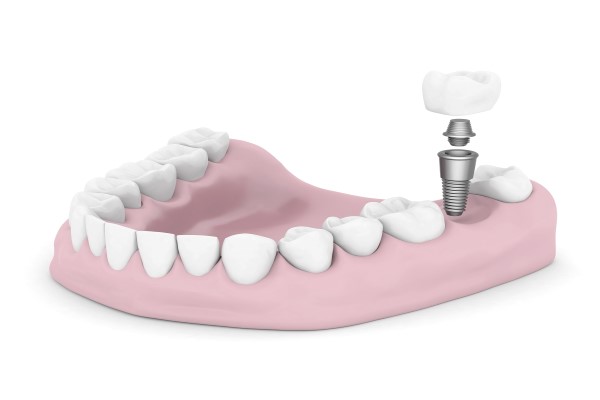Tooth ExtractionSan Diego, CA
Tooth extraction is a commonly performed dental procedure. There can be many reasons to pull a tooth. A tooth that is not extracted in time may cause further damage for the patient down the line.
Tooth extraction is available at Torrey Hills Periodontal Group in San Diego and the surrounding area. We are here to help with all your general, cosmetic, and periodontal dentistry needs. Call us today at 858-925-1188 to schedule an appointment or to learn more about our services.
Understanding Tooth Extraction
Tooth extraction is precisely what the name suggests: removing a tooth from its socket in the bone. It is one of the most standard dental procedures on the market. General dentists can often perform tooth extractions, provided the condition of the tooth has not deteriorated too far. However, only oral surgeons or periodontists should carry out tooth extractions for more complicated procedures.
There are several different types of tooth extraction. Periodontists determine which procedure is best for their patient depending on the tooth’s shape, size, position, and location in the mouth. Tooth extraction can be a simple procedure, where a tooth that is visible above the gums is removed in one piece. It can also be surgical, removing gum tissue, bone, or both. The surgeon may also remove the tooth in pieces. Wisdom tooth extraction is a common form of surgical tooth extraction.
Why Tooth Extraction
According to WebMD, there are various reasons tooth extraction may be necessary. It is sometimes enough for teeth that are broken or damaged by decay to be fixed with a crown, filling, or other dental treatment. Other times, however, the tooth may be too damaged to repair. In such cases, we may recommend extraction. Other reasons to extract a tooth include:
- Crowded mouth
- Infection
- Risk of infection
- Periodontal disease
Typically, tooth extractions to treat a crowded mouth are performed in preparation for orthodontia, better known as braces, to properly align the teeth. Teeth with decay or damage extending to the pulp are often prone to infection. If such teeth are not responsive to root canal therapy, extraction may be necessary. Those who are immunocompromised may also need to have teeth extracted even if there is the slightest risk of infection. Furthermore, severe periodontal disease may cause teeth to loosen, making it necessary to pull the affected tooth or teeth.
Check out what others are saying about our Tooth Extraction services on Yelp: Tooth Extraction San Diego
Preparing for Tooth Extraction
Before a tooth extraction procedure can occur, we must first take X-rays of the affected area to determine the best course of action. During the preparation process, patients should be as forthcoming as possible about their medical history and current condition. This involves divulging any medications they are currently taking, including any vitamins, supplements, and over-the-counter drugs.
They should also let us know if they have any other upcoming medical procedures or concurrent conditions, especially if their treatment involves a bisphosphonate. Extractions must occur before any bisphosphonate enters the body; otherwise, the jaw may be at risk for osteonecrosis, also known as bone death. Patients may be prescribed antibiotics before the procedure if the surgery is expected to take long; the patient has a particular medical condition; the patient has an infection; or the patient is immunocompromised.
What to Expect from Tooth Extraction
As mentioned earlier, there are two main types of tooth extraction: simple and surgical. In a simple extraction, patients receive a local anesthetic to numb the area around the tooth. This helps keep them from feeling any pain during the procedure. They will feel only pressure instead. Our periodontist will then loosen the tooth with a device known as an elevator before removing it with dental forceps. We will make sure the patient does not feel anything during the procedure.
Surgical tooth extraction is a more involved process and can involve removing teeth that have either broken off at the gum line or have yet to come into the mouth. These procedures are best carried out by specialists such as oral surgeons or periodontists. In this type of procedure, the surgeon will make a small incision into the gum to remove the underlying tooth. Depending on the state of decay, extraction may require the surgeon to remove some of the surrounding bone. Alternatively, the tooth may need to be cut in half to be fully extracted.
Frequently Asked Questions
What should I do the day before my tooth extraction?
If you will be receiving general anesthesia during the procedure, make sure you secure transportation back from the office. Let us know if you have any nausea or vomiting, as this may indicate a need to reschedule or change your method of anesthesia. You should also give us a call if you have a cold. Do not smoke before the surgery.
I will be receiving intravenous (IV) anesthesia during my tooth extraction. What should I wear during the day of my surgery?
Come dressed in comfortable, loose-fitting clothing. If possible, wear a short-sleeved shirt. Additionally, for your safety, do not eat or drink anything for six to eight hours before your appointment.
Are there any risks associated with tooth extraction?
Every procedure comes with its own set of risks. However, tooth extraction is generally a safe procedure, and not recommended without good reason. The primary risk of tooth extraction is a phenomenon known as dry socket, in which the blood clot naturally formed in the socket after extraction either gets dislodged or does not form altogether. This condition is typically easy to treat. If you notice any bleeding that persists for over 12 hours, chest pain and shortness of breath, cough, nausea or vomiting, severe fever and chills, or swelling and redness at the surgical site, call us immediately.
How long will it take for me to recover from my tooth extraction?
With the proper aftercare, most people recover in as little as a few days. Ice packs can help reduce swelling, but they should not be used for more than 10 minutes at a time. Pain is typically manageable with prescribed medications or over-the-counter drugs. It is crucial to rest for the first 24 hours after the extraction; patients should also refrain from using a straw, rinsing, spitting too vigorously, or eating hard foods for the first day after the procedure.
Should I stop taking blood thinners in preparation for my tooth extraction?
It depends. Such medications prevent blood clots from forming in the vessels, making you more susceptible to excessive bleeding during surgery. Bleeding at the extraction site can typically be controlled with topical clotting medications on the gums, foam or dissolvable gauze, or stitches. If you take blood thinners, let us know and we will work with you to determine the best course of action.
Call Us Today
Tooth extraction can help solve a variety of dental health issues. We at Torrey Hills Periodontal Group may be able to help. Call us today at 858-925-1188 to schedule an appointment or to learn more about our services.
Torrey Hills Periodontal Group is located at 4765 Carmel Mountain Road Ste 204 San Diego, CA 92130.
